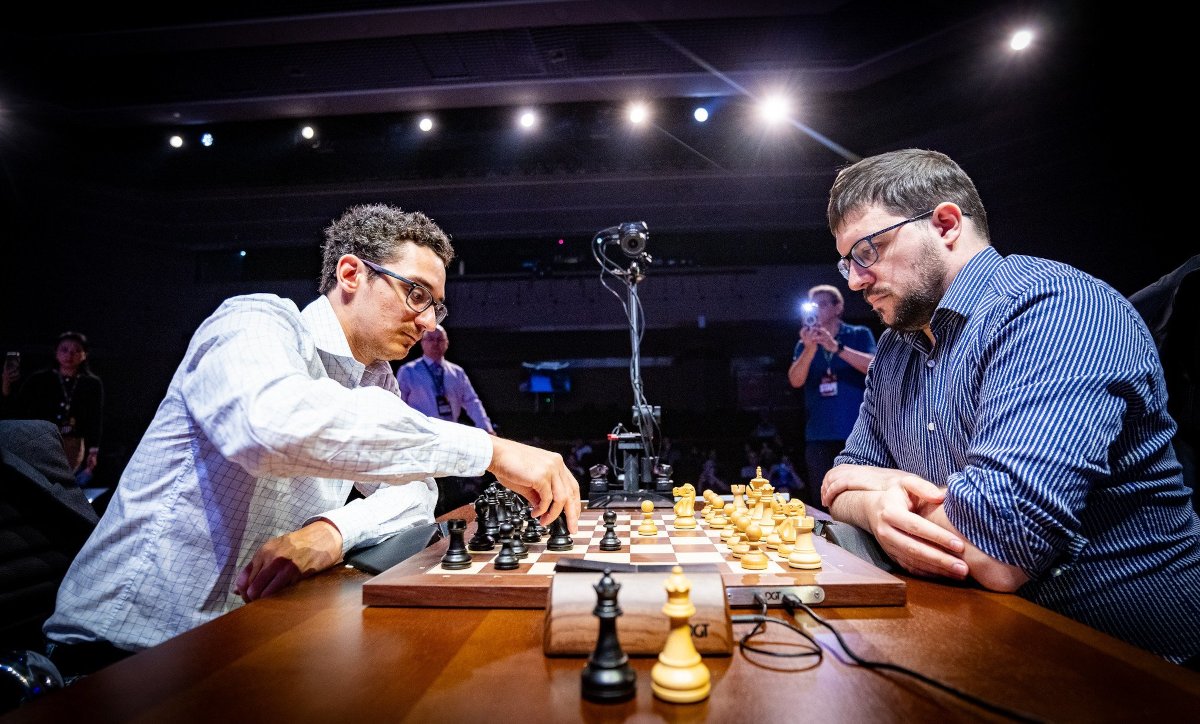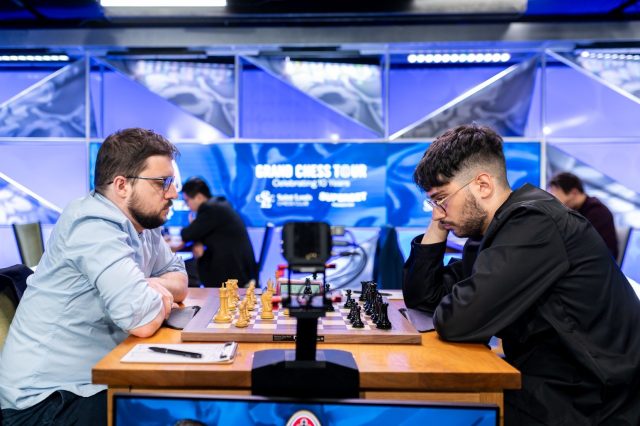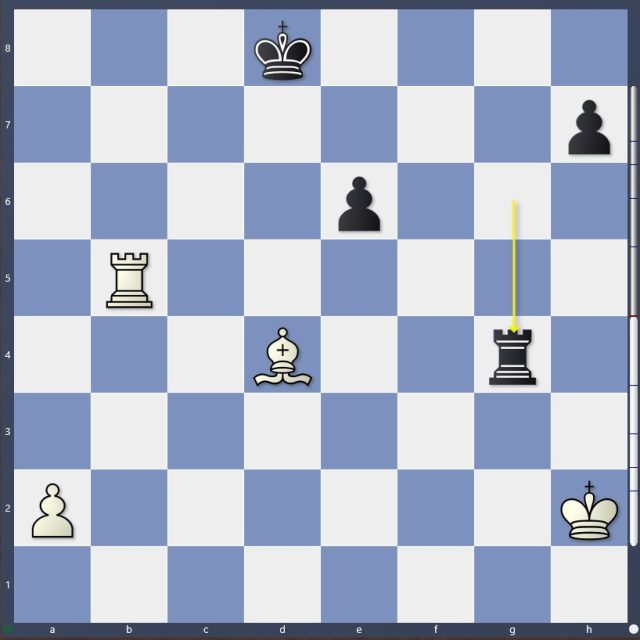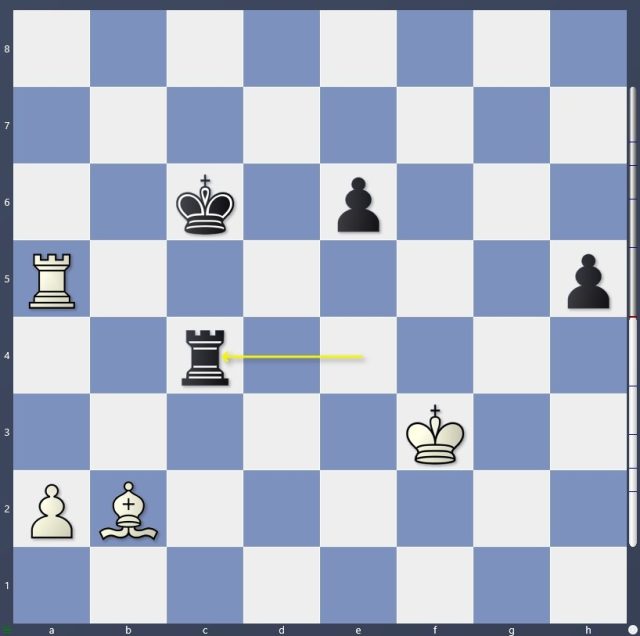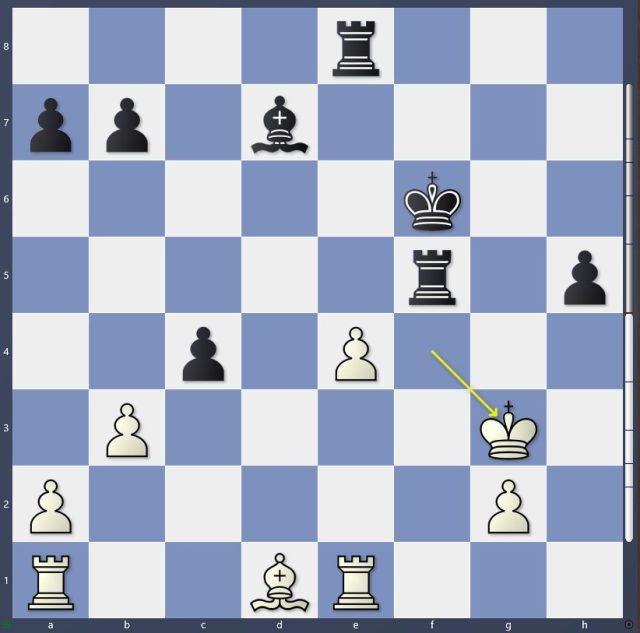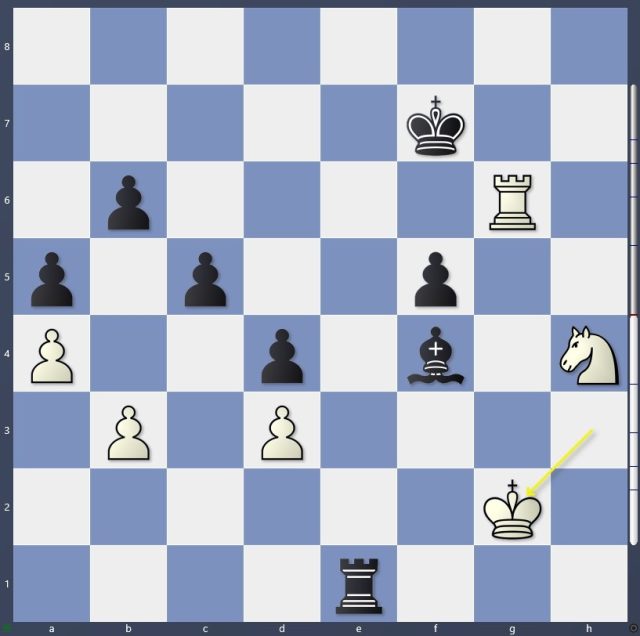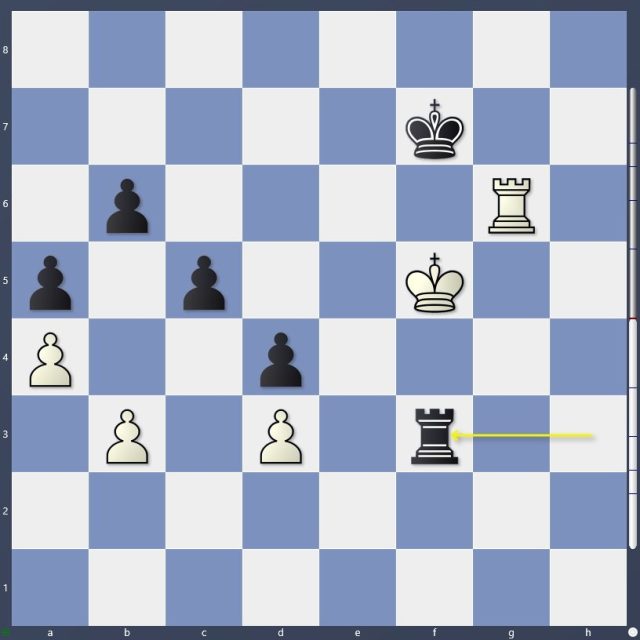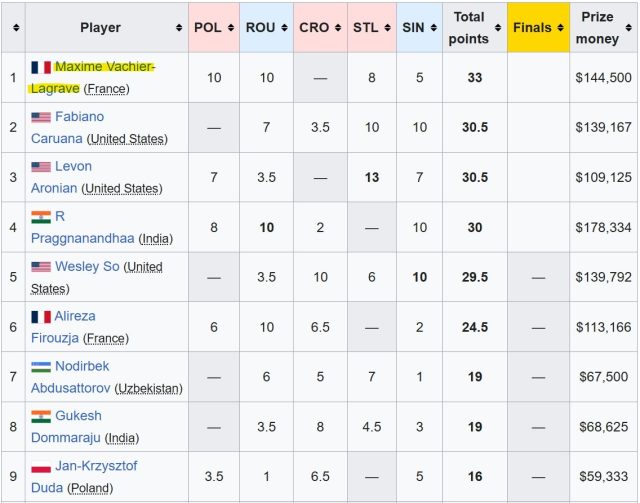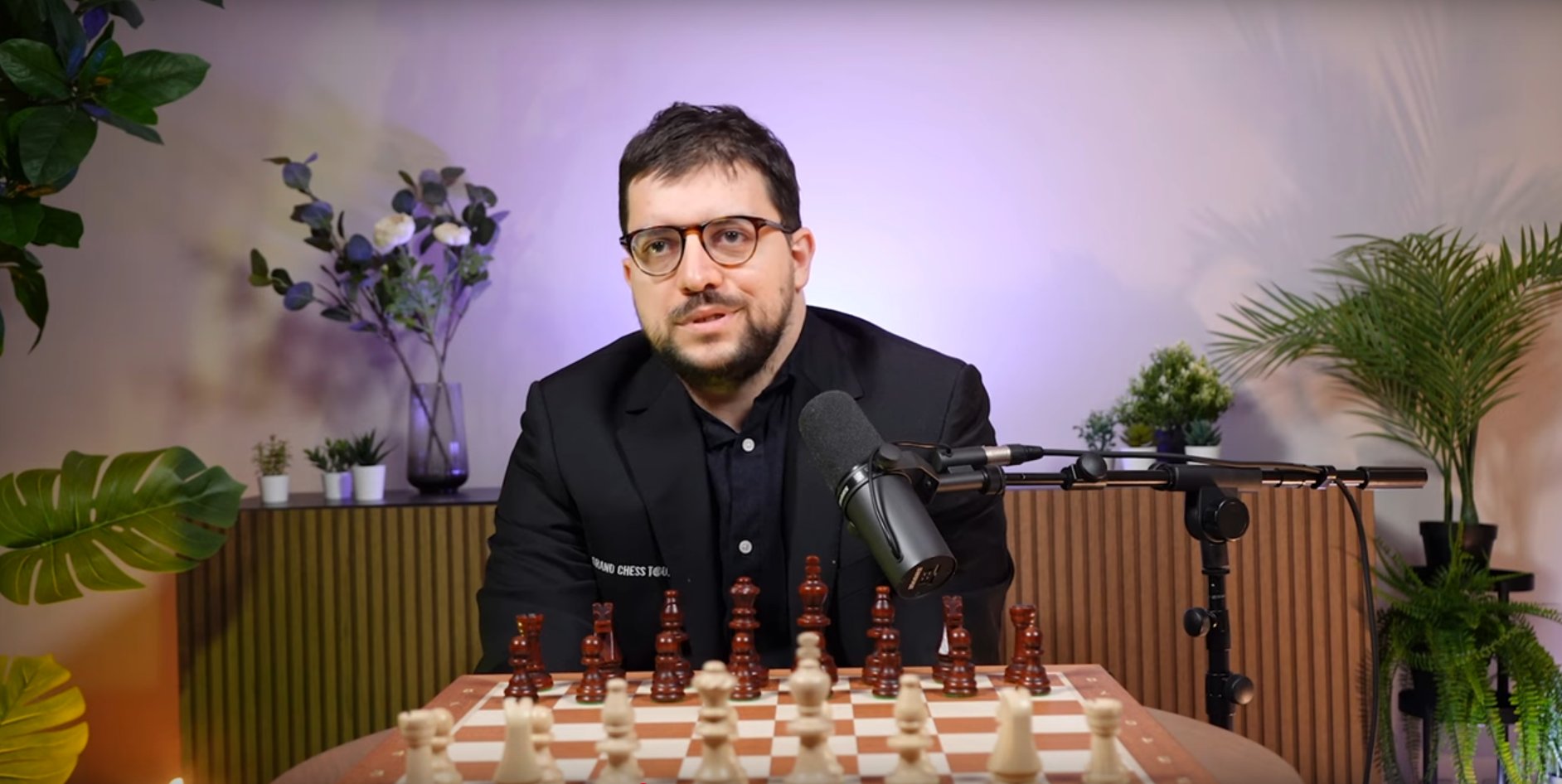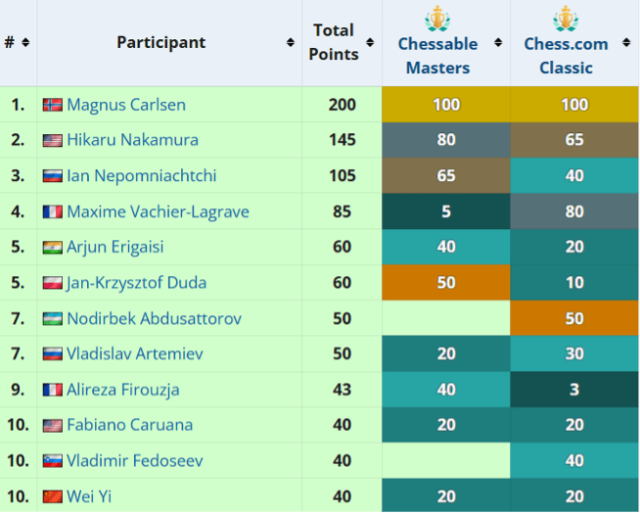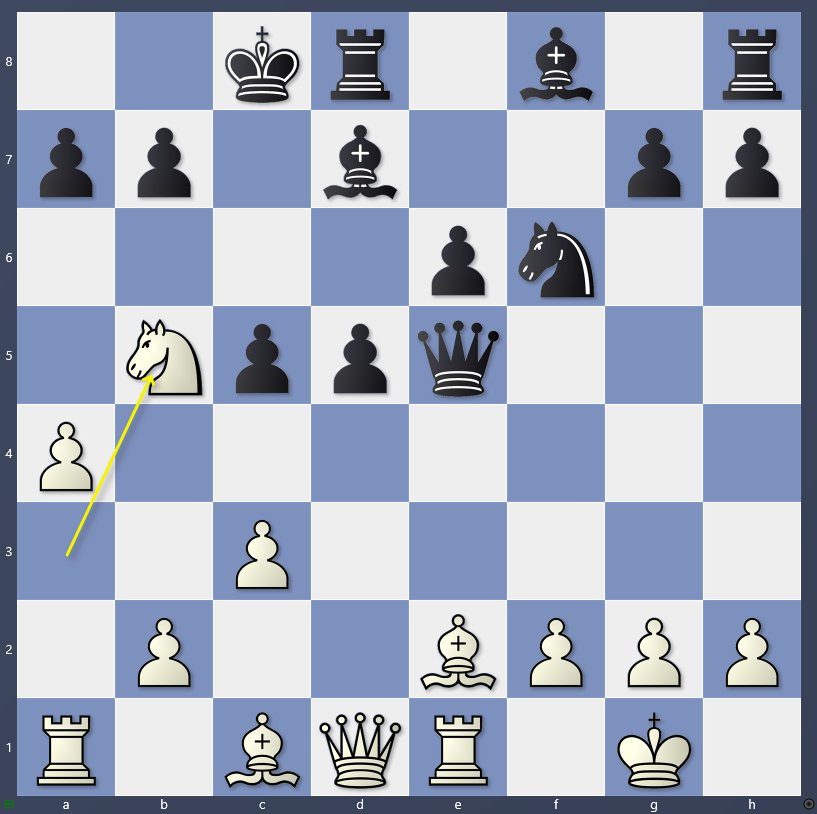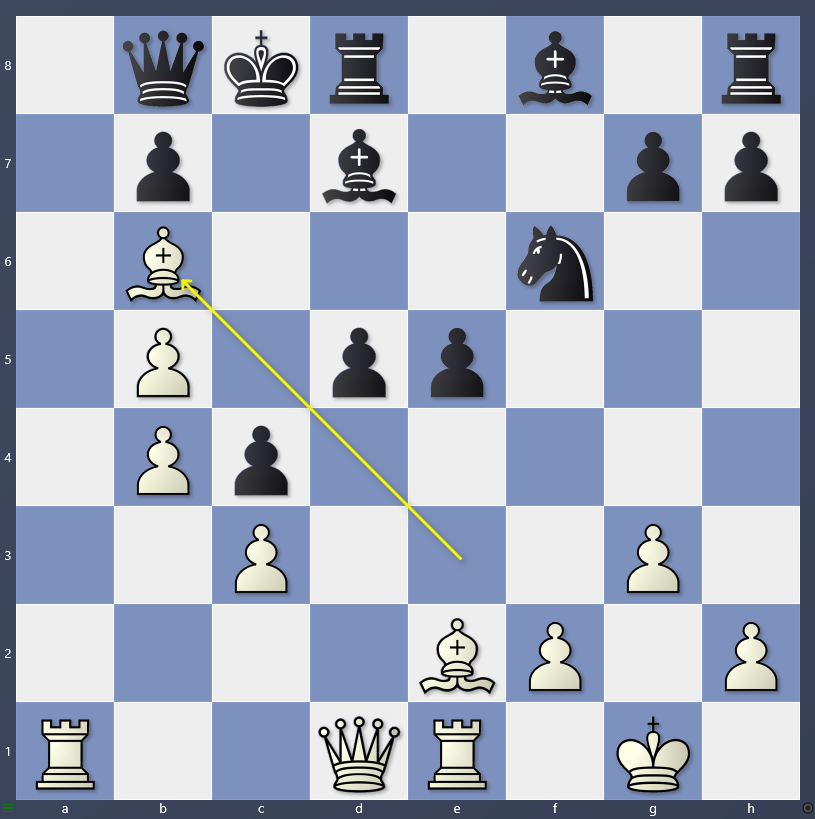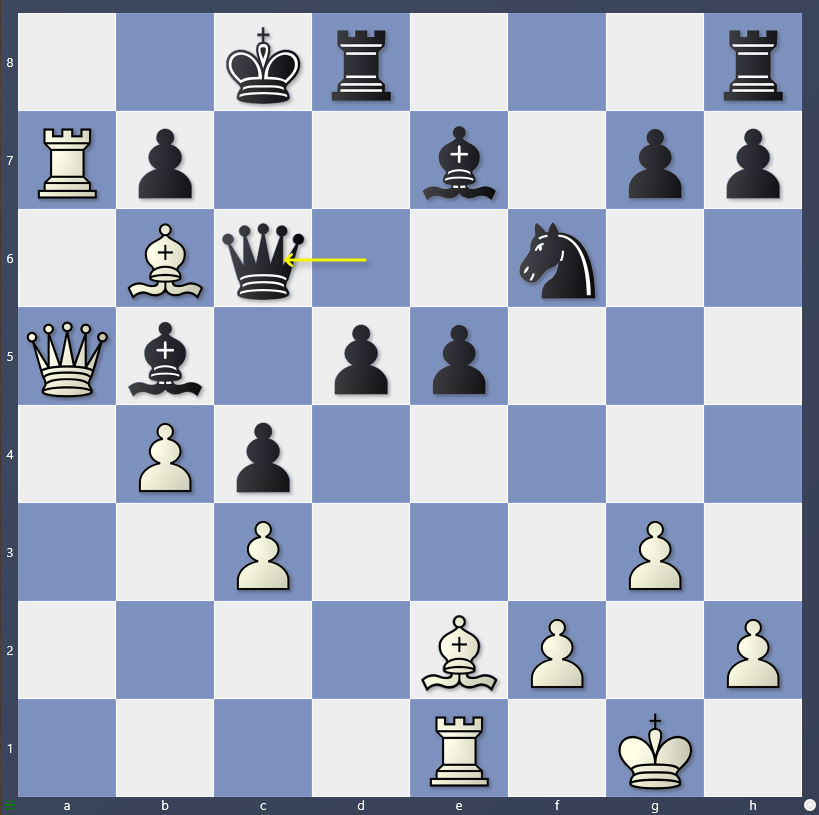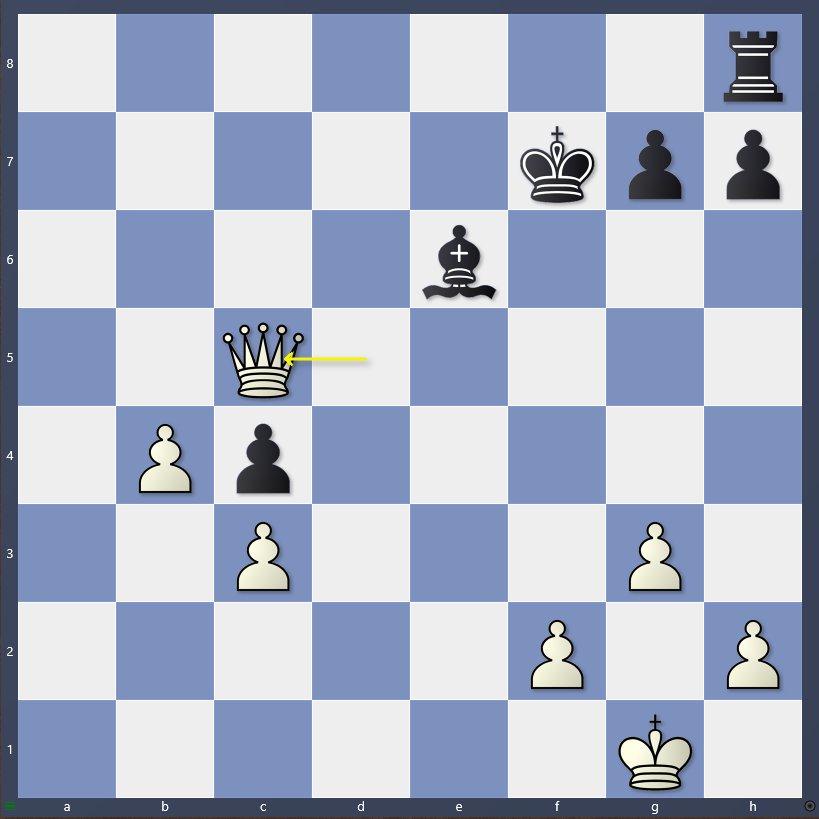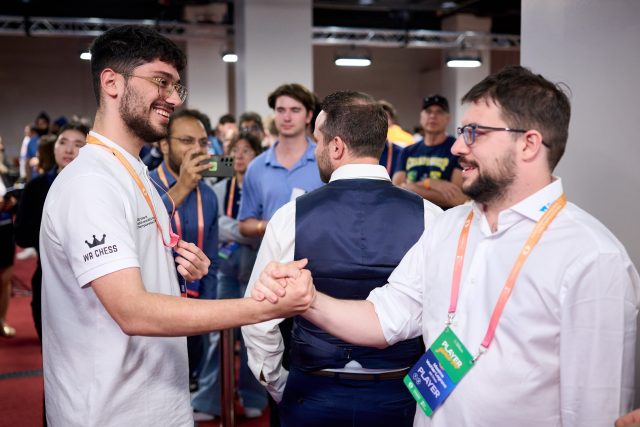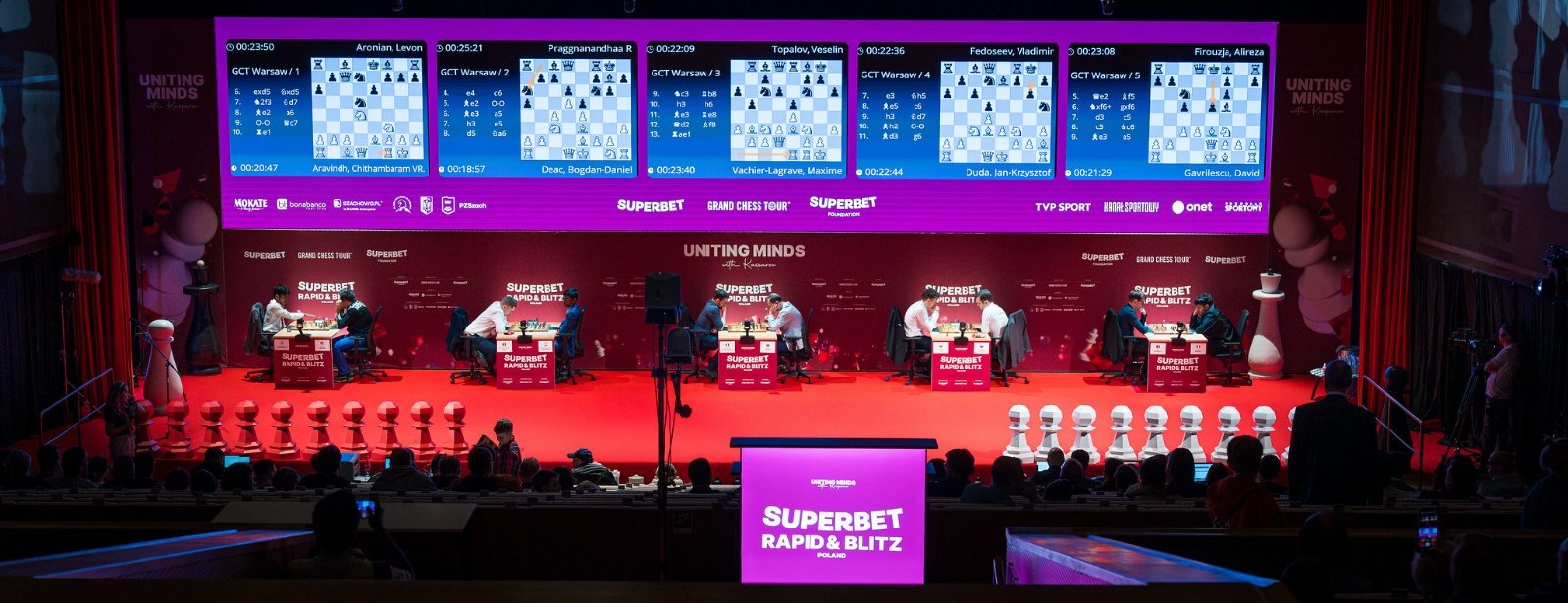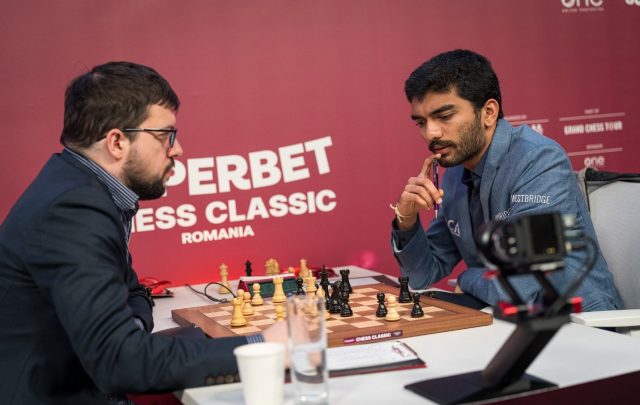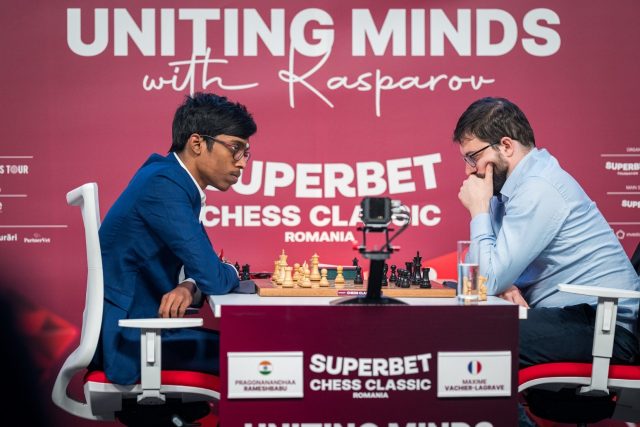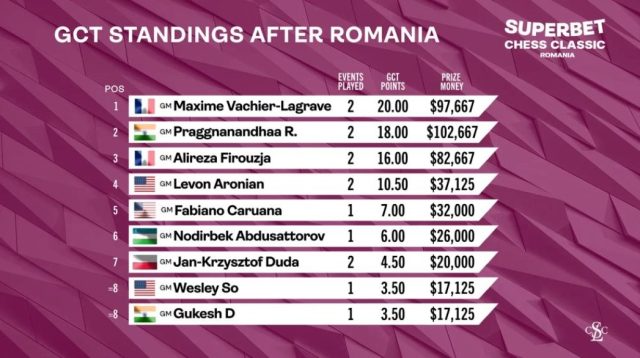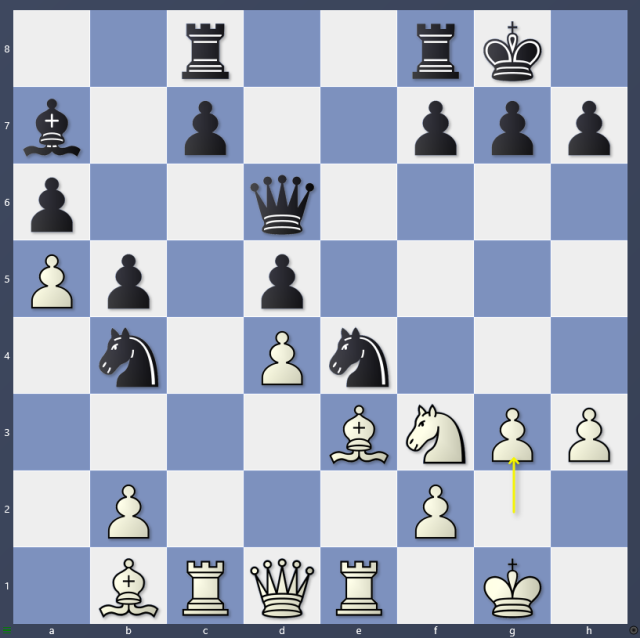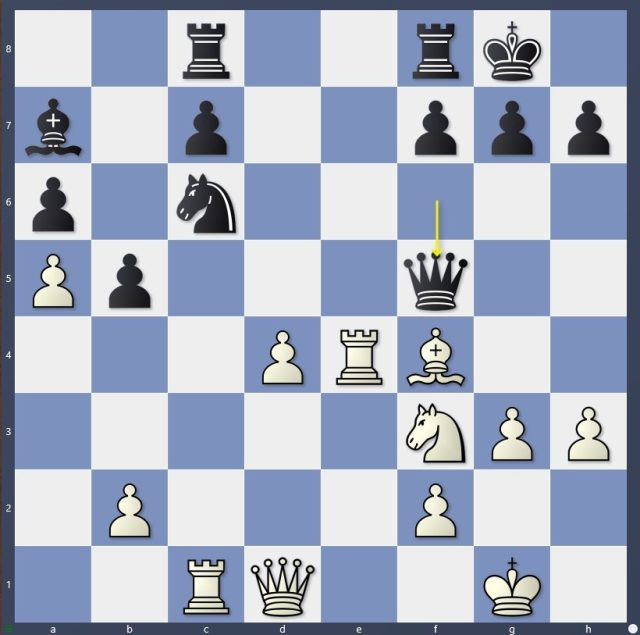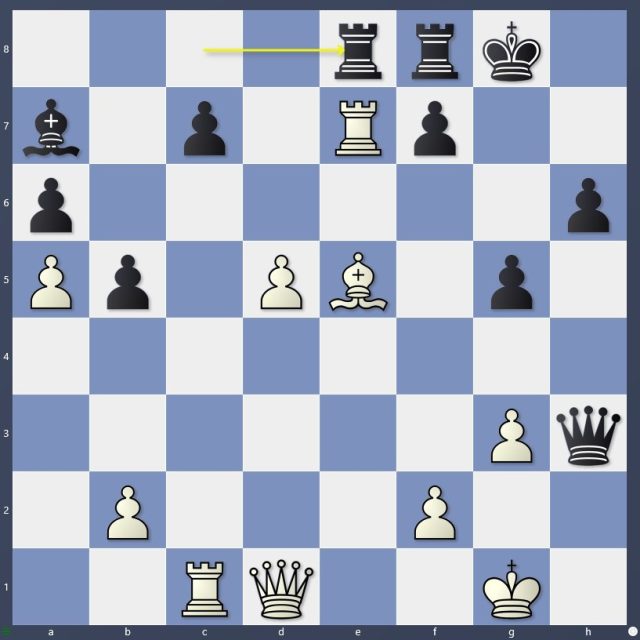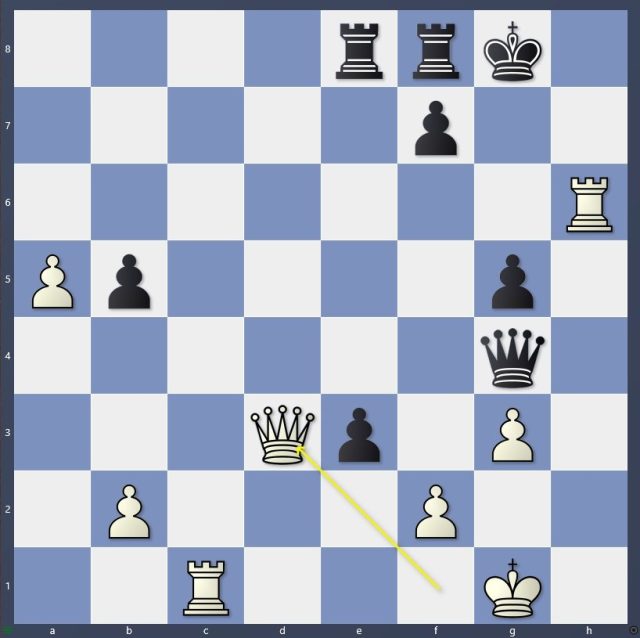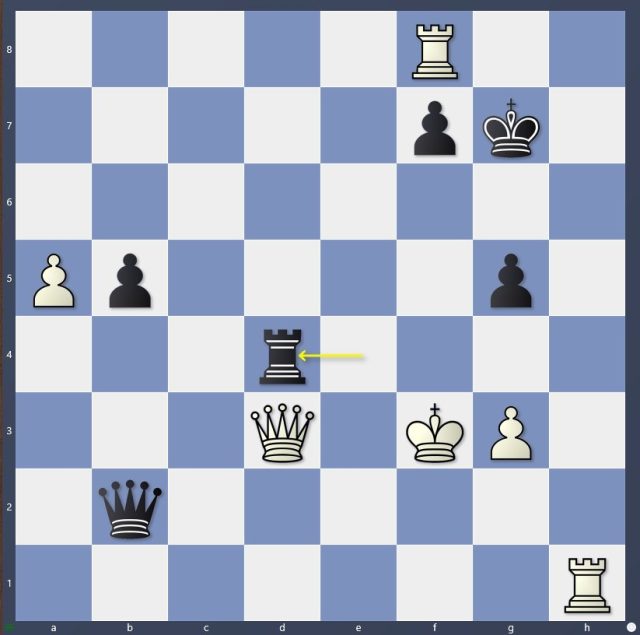Yes, this September really was « Grand », with first the Grand Swiss in Samarkand (Uzbekistan) and then the Grand Chess Tour finals in São Paulo (Brazil) – two obviously very important events: the first being a qualifier for the Candidates 2026, and the second deciding the season’s professional circuit podium.
I arrived at the Grand Swiss with a whole French delegation: Jules (Moussard), Marc’Andria (Maurizzi), Maxime (Lagarde) and I all took the same flight from Paris – I think Étienne (Bacrot) came from Nice. The venue was a bit too isolated but quite pleasant, and we still managed to visit Samarkand’s famous old town. We were spread across several hotels and there wasn’t much to do outside aside from walking – though the riverside setting was nice. Maxime stayed in the same hotel as me, while Jules and Marc’Andria were elsewhere. Our hotel even had a games console with several games, including FIFA, and a ping-pong table. So the four of us often met there.
After a short week at home, I had to head off in the other direction – to Brazil! Another country added to my list 😊. The first thing that struck me on arrival was the huge enthusiasm for chess. It’s true it was the first super-tournament in Brazil – even in South America – for about twelve years (São Paulo already, a tournament I hadn’t participated in). There was a big crowd for the event and a real passion from the public; it’s also just part of the Brazilian spirit. The tournament itself was extremely well organized. I’m very happy to have taken part and to have helped contribute to the hype around the event and to engage with the local public.

On the competitions themselves:
In Samarkand, I wasn’t thrilled to start with black in an 11-round Open where you absolutely need to score to be among the top two qualifiers for the Candidates. It turned out I soon had a double white, and ultimately finished with six whites! The tournament started well, but I suffered a sharp setback against Marc’Andria in a very wild game where anything could have happened. I reached a winning position, but that was partly because Marc’Andria took a lot of risks at one point.
In round 6 with black against the Armenian Sargsyan, I decided to go all-in (rightly or wrongly), and it went very badly! Afterwards, I managed to win three games in a row, which gave me some hope, but it was unfortunately « too little, too late », especially after a game where I might have had a chance against Mishra, but he was very solid and found the right moves to hold. In the end I posted a respectable +3 (7/11), but there is a bitter taste since I didn’t really fight for the top places. Clearly, the loss with white against Marc’Andria changed a lot in that respect.
For the four-player final of the Grand Chess Tour, I had set myself two missions. First, win a match to qualify for the 2026 edition. Second, go for the overall victory, as I had never won this circuit despite being a regular on the podium for the past ten years.
In the semi-final against Pragg, who has played extremely well this year, the match was tense. After two draws in the classical games, I produced a very convincing first Rapid game with white. In the second Rapid he caused me a lot of trouble, but I managed to find active, accurate moves and to defend. The blitz games could have gone badly, but I was lucky to win from a lost position in the third one and ultimately take the match.
With the first mission accomplished, I then went for the second: the final against Fabiano (Caruana). The pattern was somewhat similar to the match against Pragg, except that in the first classical game it was Fabi who had winning chances after an enormous amount of prep on his part and a gigantic game. Luckily, he made some mistakes in a dramatic Queen endgame in which I held on with a lot of resilience – and a little bit of luck! Like against Pragg, after two draws I won the first Rapid game and then comfortably defended the second. However, I completely collapsed in the blitz – I lost three straight games! A first unfortunate loss triggered everything, but clearly the blitz was a major weakness in both matches. Less consistency, less freshness – these are things that happen to me more often now, whereas blitz used to be a strength. Still, I came extremely close to equalizing in the final blitz.
Overall, either of us could have won the match, but Fabiano’s final victory was by no means undeserved. My blitz skills exposed too many limits to hold the score.
Some noteworthy moments from the two events:
GRAND SWISS
MVL- MAURIZZI, Round 4
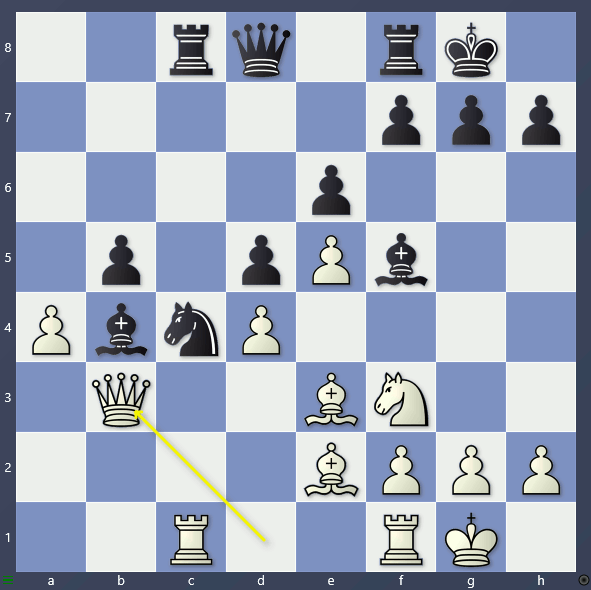
I was neutralized in the opening and there was a very critical moment here. After
19…Qa5 20.axb5 Qxb5
, I was initially planning 21.Nh4?, but that’s a mistake because of 21…Be4 22.f3 and the move we both missed, 22…Qb6 23.fxe4 Bd2!. So after 20…Qxb5 I should have played 21.Nd2 and everything trades off: 21…Nxd2 22.Bxd2 Qxe2 23.Bxb4 =. But Marc’Andria preferred the enormous complications resulting from 19…Ba3!? 20.Rxc4 dxc4 21.Qxa3 Qa5. The position then became wildly unbalanced, yet I still felt I had a more dangerous attack, which was ultimately borne out.
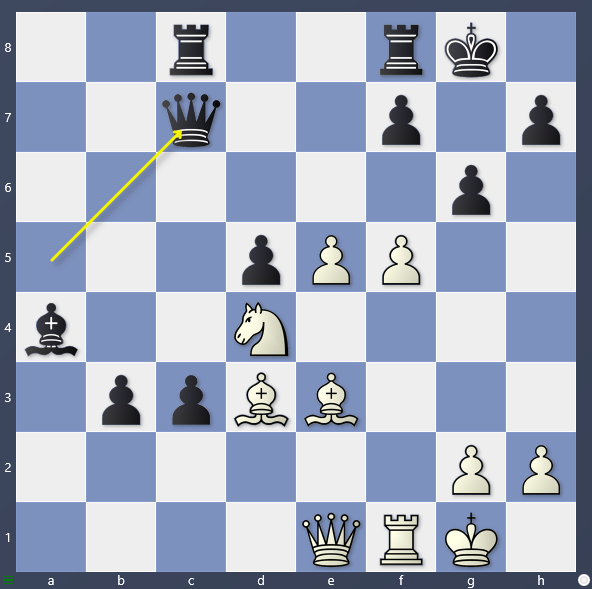
Here I had a win but didn’t find it and ended up playing 30.Bh6?, a totally off move. You can feel it – but I couldn’t clearly identify either of the two winning lines. For me the first is the easiest: 30.Qh4 Qxe5 31.Nc2! and the arrival of the Bishop on d4 is lethal. 30.Ne2 immediately also worked, with the same idea of bringing the Bishop to d4, after which the black King will be helpless.
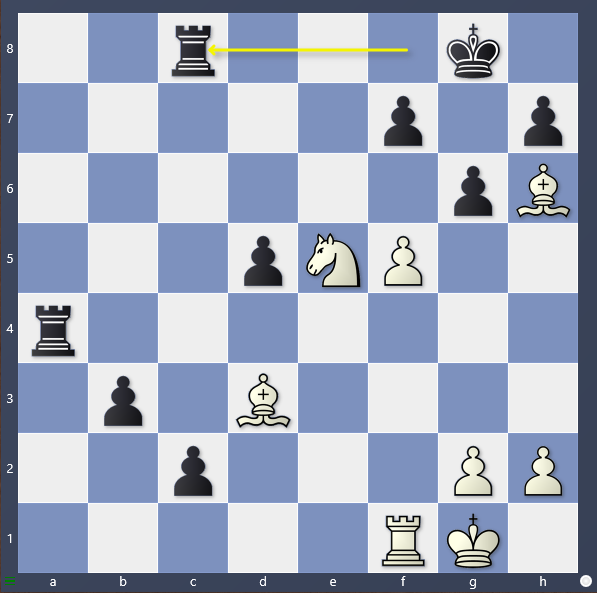
In the game, after several inaccuracies on both sides in this crazy position, I completely cracked here.
I had seen 35.fxg6 hxg6 (35…fxg6? 36.Nc6!) 36.Rxf7 c1=Q+ 37.Bxc1 Rxc1+ 38.Kf2 but I thought it was losing because the b-pawn would promote, when in fact it wasn’t. It was because in my head during the time trouble my Bishop lingered on h6 and it’s the Bd3 which I believed sacrificed itself on c1 😊. So at first I thought I could mate with Rg7+ with a « shadow Bishop » on h6! But when I realized the confusion I felt doomed, hence 35.Bc1? which loses without resistance after 35…Ra2 followed by …b2.
This result rewarded Marc-Andria’s extremely risky play. Objectively, it was a bit crazy on his part; one could say the position looked extremely dangerous for him, which the analysis later confirmed.
RODHSTEIN – MVL, Round 8
The Israeli GM surprised me a bit with the Anti-Grünfeld 3.f3, even though I knew he had analyzed it a lot when he was helping Gelfand for his 2012 World Championship match against Anand. I also knew he’s an inherently ambitious player who always plays for the win. Obviously, getting these complications didn’t bother me at all! The position turned out very well for me and I found myself winning; however, conversion was not easy.
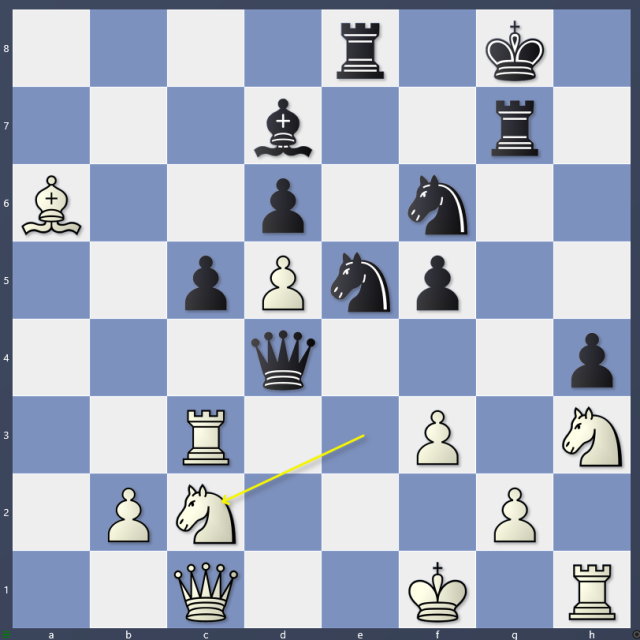
I eventually found the right idea with 34…Qa4 35.Ra3 Bb5+ (35…Qxa6+ would have been more aesthetic) 36.Kg1 Qxa6. After 37.Rxa6 Nxf3+ 38.Kf2 Re2+ 39.Kxf3 Rg3+ 40.Kf4 Nh5+ 41.Kxf5 with three mating moves available (41…Bd3, 41…Bd7 and 41…Re5), I chose at random 41…Bd7#!

MVL – ERDOGMUS, Round 9
The young Turkish prodigy chose the somewhat unexpected Open Spanish. I should have foreseen it since he’s coached by Mamedyarov, who has played that opening a lot. In any case I anticipated he wouldn’t play the 12…d3 line as Mamedyarov does, but rather
12…dxc3, and fortunately I remembered that line fairly well.
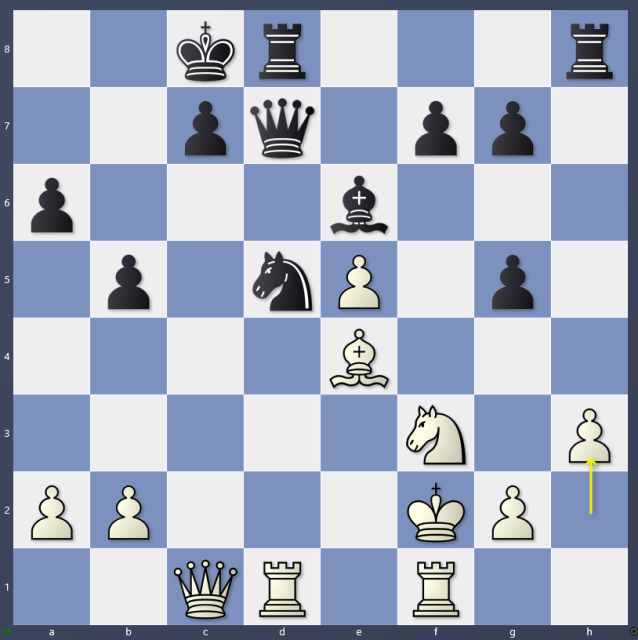
Here I knew 21…g4 was probably the most precise, but he preferred 21…f5 22.exf6 gxf6 23.Nd4 Rh4 24.Rfe1 Rf4+ 25.Bf3 Bxh3? (25…Rxf3+! 26.Nxf3 Qd6 was the only way to continue, with compensation for the exchange) 26.Qc6! (punishing the error) 26…Rxf3+ 27.gxf3 Nb6.
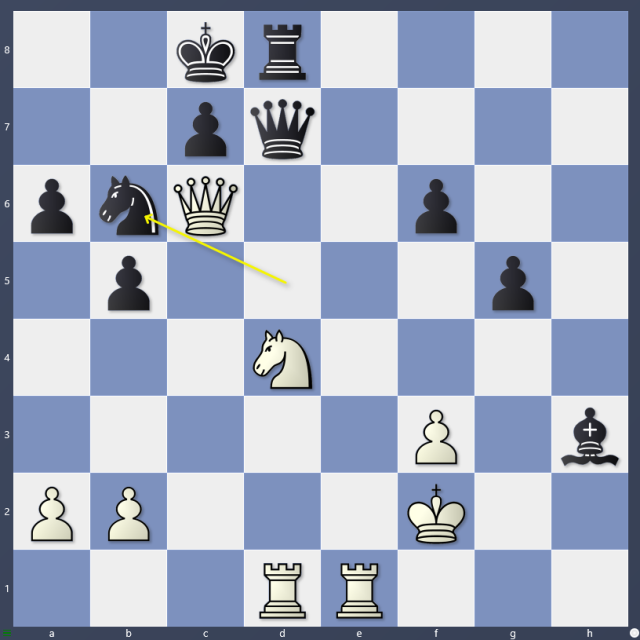
28.Nb5! (definitely not 28.Qxf6? because 28…Qh7! is too dangerous) and the endgame is winning after 28…Qxc6 29.Na7+ Kb7 30.Nxc6 Rxd1 31.Nxa5+ Rc8 32.Rxd1. I could have converted more efficiently, but his strong defense is worth noting.
GRAND CHESS TOUR (FINAL PHASE)
PRAGG – MVL, semi-final, Game 1
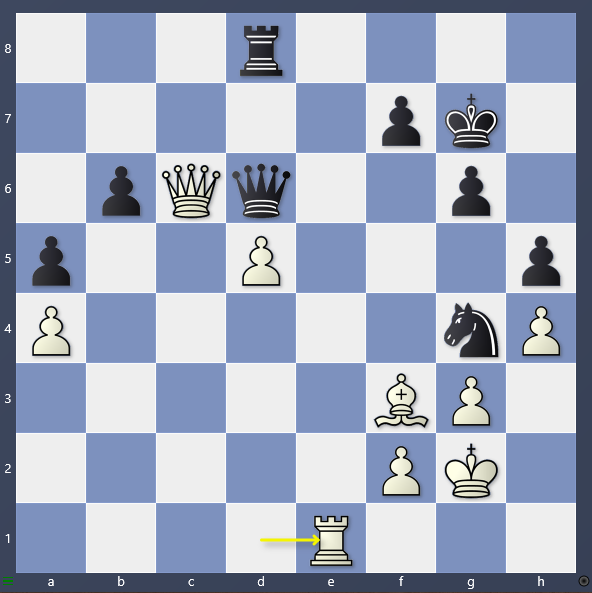
During the game the position felt more difficult than it really was. I didn’t at all see the possibility 36…Qf6, which was so much simpler than the 36…Qb4 I played. After 37.Re4 Qd2?! it was already dubious since 38.Qxb6 follows; the resulting Rook ending after 38…Rxd5 39.Bxg4 hxg4 40.Rxg4 seemed drawn to me, but it’s not that easy to defend. Pragg chose 38.Re2 and I didn’t understand that I absolutely had to return to b4; for me I was already clearly worse. I had seen that after 38…Qd4? 39.Qc7! I would be in trouble, because if the Rook moves, then 40.d6!, and if 39…Qf6? 40.Re6!. 39…Rxd5 40.Bxd5 Qxd5+ 41.f3 would have been forced, leading to a difficult ending. But Pragg didn’t play 39.Qc7 because in the final moment he saw 39…Re8 and panicked, but there was just 40.Bxg4, which wins! He ended up playing 39.Rc2? with only one second left on the clock! Instead of being worse, I got an ending a pawn up after 39…Ne5 40.Qc3 Nxf3 41.Kxf3 Rxd5 42.Qxd4+ Rxd4…
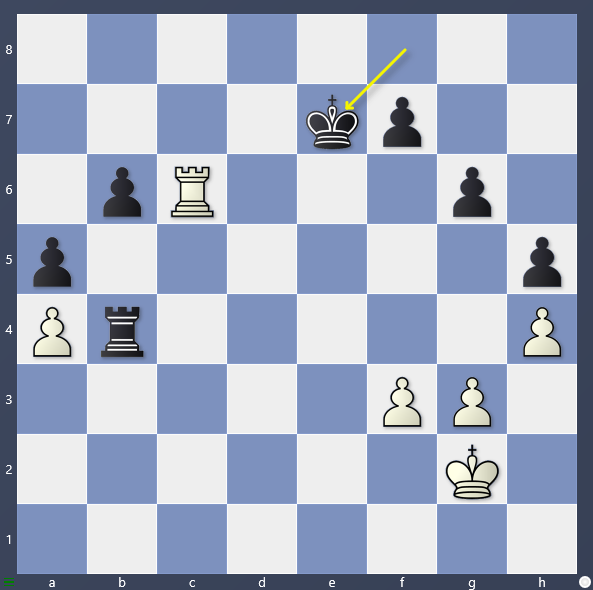
This Rook ending is theoretically drawn but still extremely complex and it offers practical chances. It seems 46.Kf2 would be a draw here, for example 46…f6 47.Ke3 g5 48.hxg5 fxg5 49.f4 gxf4+ 50.gxf4 h4 51.Kf3. But not 46.Kh3? f6 47.Kg2 g5 48.Kh3 gxh4 49.g4!? which was ingenious but insufficient. 49…hxg4+ 50.fxg4 Kf7 51.Rd6 Ke7 52.Rc6 and here I missed the chance to force zugzwang; regrettably I did not find it.
And it wasn’t that hard! 52…Rb2! 53.Kxh4 (otherwise the Rook must let the black King pass) 53…Rb3 54.Kh5 (54.g5 is identical) 54…Rb4!, and the Rook’s stair-step maneuver forced a complete zugzwang: 55.g5 fxg5 56.Kxg5 Kd7 57.Rh6 Kc7 and the a pawn is lost.
Unfortunately I didn’t notice this zugzwang and, admittedly with a heavy heart, I chose 52…Rxa4? 53.Rxb6 Rb4 54.Ra6 a4
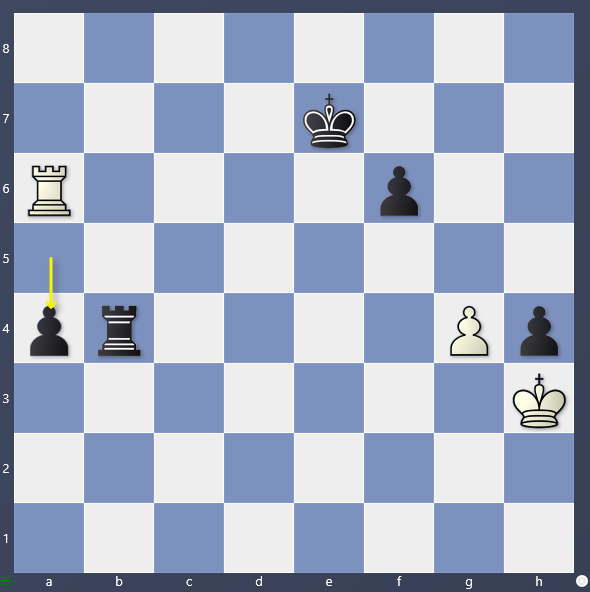
I had understood that here 55.Ra7+! was the only move to draw, since after 55…Kd6 56.Ra6+ Ke5, white can calmly capture on h4, the unfortunate position of the King on e5 preventing 57…f5? 58.Ra5+.
I still hoped a little that he would play the other move that looks natural, 55.Ra5?, which he did! But if that move indeed loses, it’s not for the reason I thought! After 55…Rb3+? 56.Kxh4 a3, white escapes with a draw by a tempo with 57.Ra6! (the move I forgot; I was expecting 57.g5? fxg5+ 58.Kxg5 Kd6 59.Kf4 Kc6 60.Ke4 Kb6 with a decisive gain of tempo on the Rook) 57…Rf3 58.g5 fxg5+ 59.Kxg5 Kd7 60.Kg4 Rb3 61.Kf4 Kc7 62.Ke4 Kb7 63.Ra4 Kb6 – and with the Rook on a4 instead of a5, black does not win a decisive tempo!
The « real » winning idea was 55…Rf4! 56.Kxh4 f5 57.Kg5 Rxg4+ 58.Kxf5 Rh4! (the key move, missed by both players) 59.Ra6 (59.Kg5 Rb4 60.Kf5 Kd6 61.Kf6 Kc6 62.Ke5 Kb6 gaining the crucial tempo) 59…Kd7 60.Ke5 Kc7 61.Kd5 Kb7 62.Rg6 a3 63.Rg2 Kb6 64.Ra2 Ra4 and white’s King is cut from the pawn.
MVL – PRAGG, Rapid 1
In the opening, Pragg forced the exchange of Queens at the cost of doubled a-pawns, and I thought the resulting endgame would be difficult for him. That proved true over time…
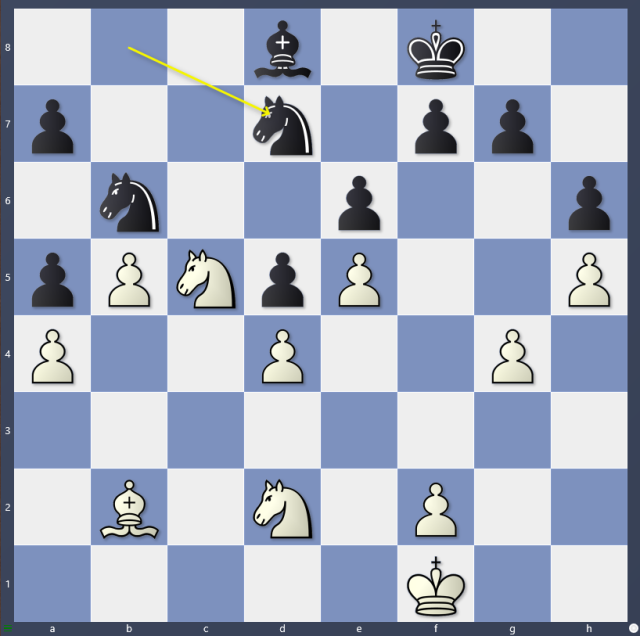
I’m quite happy to have realized that exchanging all Rooks was the right decision: 29.Ke2! Ke8 (29…Nxc5 30.dxc5 Na4 31.Bd4!) 30.f4 Be7 31.Ndb3 Nc4 32.Bc3 Ndb6 33.f5! and the space advantage combined with the weakness of the a-pawns becomes decisive.
PRAGG – MVL, Rapid 2
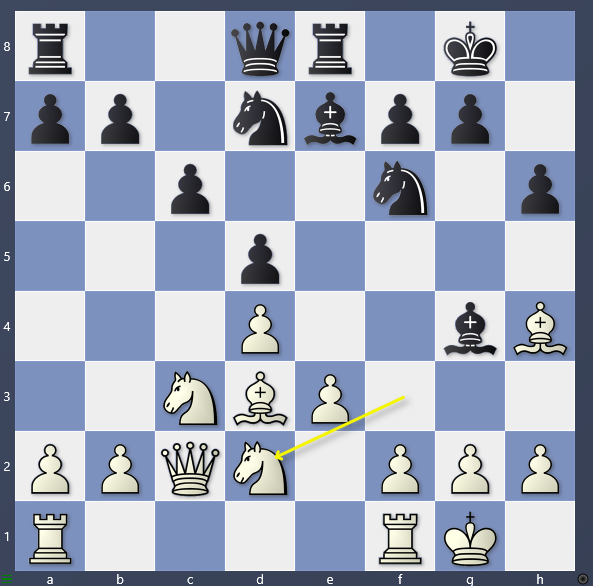
I came under heavy pressure in this Queen’s Gambit. His move 12.Nd2 was interesting and I reacted poorly, probably from inexperience in that line. The slightly risky 12…a5?! was inaccurate; 12…c5 would have been better (now that his Knight is on d2), even though I had just played 11…c6 ! Including 12…a5 13.a4, as Jules (Moussard) – who was there in Sao Paulo as my second – pointed out, prevents me any counterplay with …c5 because of the b5 square.
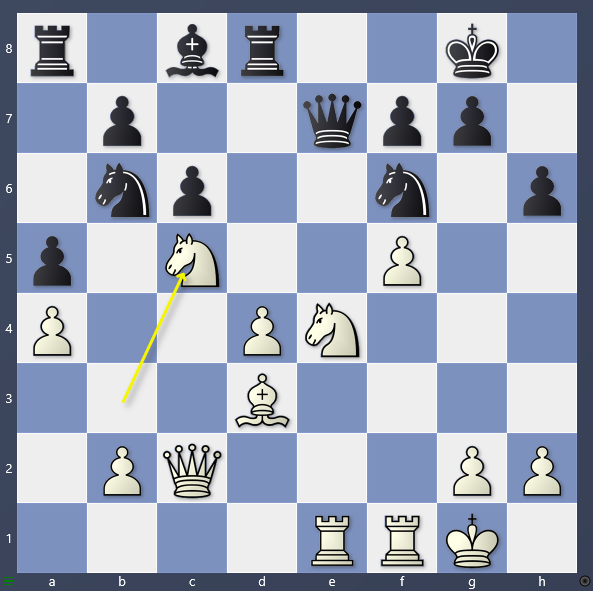
The critical moment of the game is here. I disliked 21…Nbd5 22.Nxf6+ Qxf6 23.Qf2, or 22.Qf2 immediately, which I found very uncomfortable. But 21…Nbd7? is much worse! We both missed 22.Bc4! Nxc5 23.dxc5 (23.Ng5? Qd6 didn’t work) 23…Nxe4 24.Qxe4! (a very important move). Now, if I exchange Queens, my pieces are trapped, and after 24…Qxc5+ 25.Kh1 I still cannot develop my Queenside, for example 25…Bd7? 26.f6! followed by 27.Qg6 – I can resign. 22.Qc3?! Nxe4 23.Rxe4 Qd6 wasn’t the end of the story… 24.Nxd7 Bxd7 25.f6 still poses serious problems. I quickly realized I had to prevent 26.Re7, hence
26…Re8 26.Rh4 (26.Ref4 g5!). In the end, I had to understand the vital importance of the maneuver 26…Re6 27.fxg7 Rf6! which allowed me to solve most of my issues.
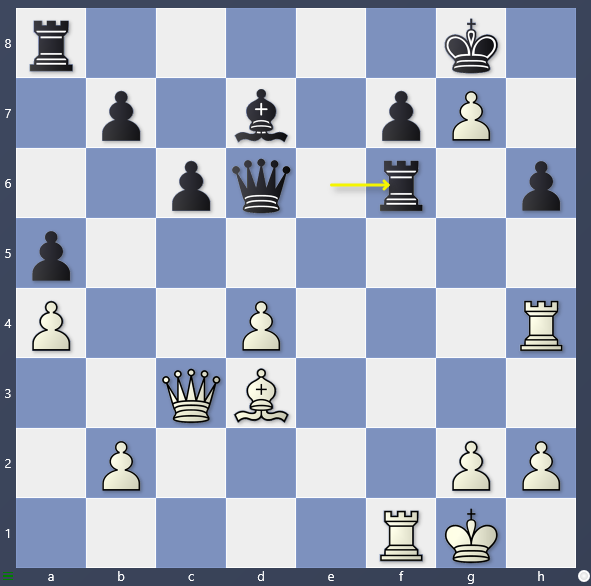
After 28.Re1 Qb4 29.Qc1, I had another scare: I had my hand over the Rook to play 29…Re8??.
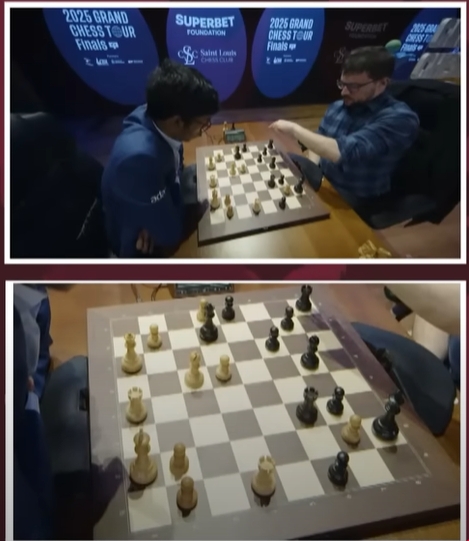
At the very last moment I saw 30.Rxe8+ Bxe8 31.Rg4! and the threat 32.Bh7+ is unstoppable! Pragg had also seen it and mentioned it after the game. Phew! And draw a few moves later after 29…Kxg7.
CARUANA – MVL, Final, Game 1
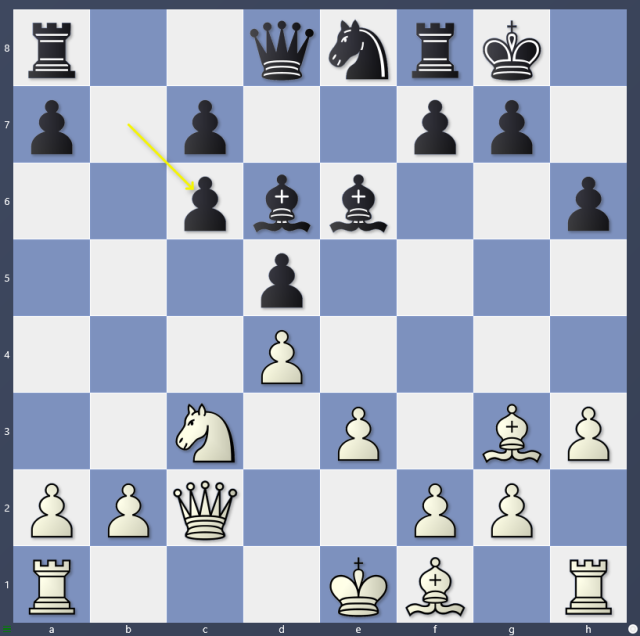
We are here in a modern line of the Queen’s Gambit, Exchange Variation. Fabiano prepared the novelty 14.Bd3, accepting doubled g-pawns. I know he often builds very long home-prepared lines and remembers them remorselessly. But he still surprised me by playing almost all his moves a tempo up to 23.Rf4!
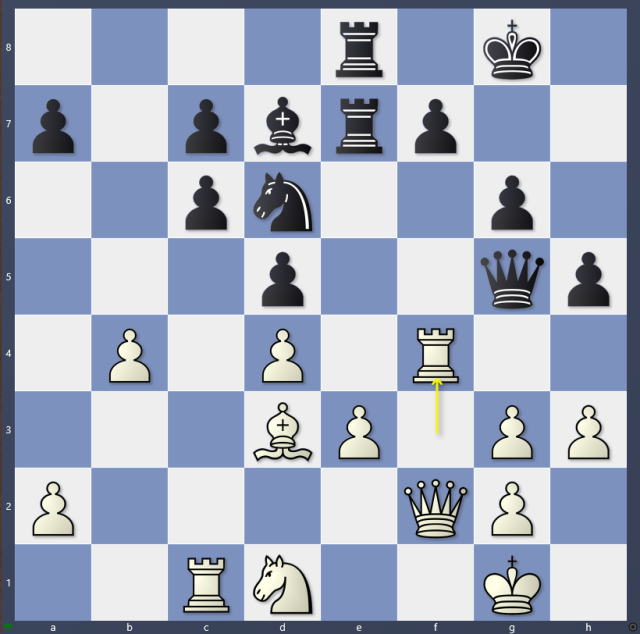
I even overestimated the value of his prep because I spent a lot of time and wasn’t sure I was playing the right moves. I discovered I had found the first machine lines even though they didn’t seem forced, but he still replied almost instantly 😊. Still under the impression of being worse (though objectively I wasn’t), after correctly sacrificing a pawn with 24…Re6 25.b5 cxb5 26.Rxc7 Qd8 27.Rxa7 R8e7 28.Rf6 Kg7 29.Rxe6, I made a first inaccuracy by provoking the Rook exchange with 29…Bxe6?! (29…Rxe6! followed by …Bc6 and …Qb6; I wouldn’t say I would be better, but surprisingly it’s almost more pleasant for black) 30.Rxe7 Qxe7 31.Qb2
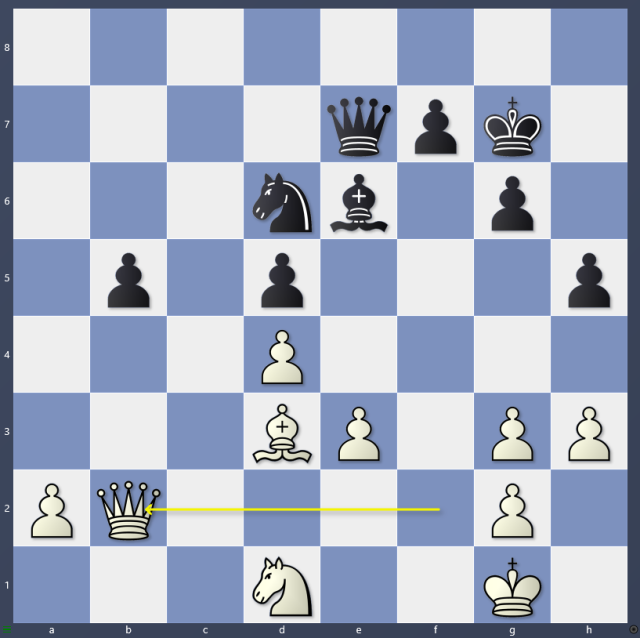
I felt there was enough play to equalize after 31…Bf5 (I spent a lot of time here and disliked 31…Bd7 because of 32.Qb4). Now, after 32.Bxf5 Nxf5 33.Qxb5, there was this incredible defensive idea 33…Qe4! that I hadn’t seen. Initially I wanted 33…Qd6? but 34.g4 would win for white (but not 34.e4? because 34…Nxd4 35.Qxd5 Qb4! which is very pretty, with the threat …Qe1+ and …Ne2). After 33…Qe4 34.Qb3 Nxg3 35.Nf2 Ne2+ 36.Kf1 Ng3+, everything is ok for black but I completely hallucinated, thinking white could escape the perpetual with 37.Ke1?, forgetting 27…Qxg2. After 32.Bxb5, I considered 32…Ne4 but after 33.a4, I missed 33…Qc7! which both attacks the pawn on g3 and prevents 34.a5. So I preferred
32…Nxb5 33.Qxb5 Bc2, forcing the transition to a Queen ending after 34.Qe2 Bxd1 35.Qxd1 Qxe3+ 36.Kh2
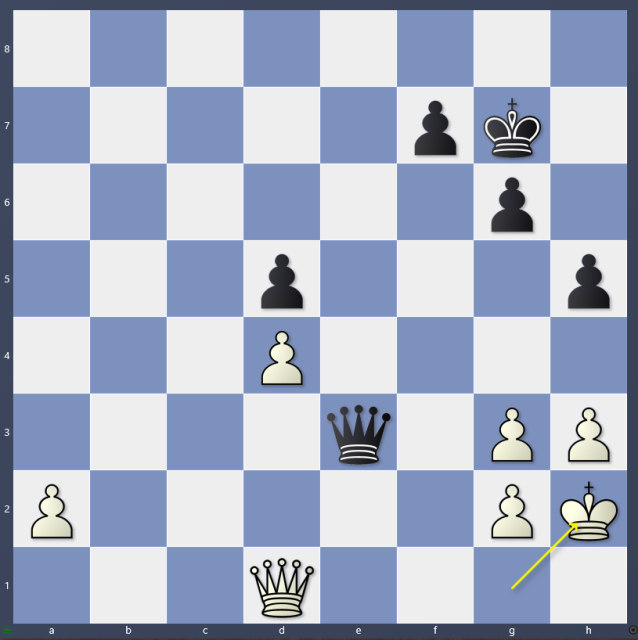
Objectively the ending is drawn, but with Queens it’s never simple; there were many options. 36…Qc3 seemed passive after 37.h4 followed by 38.a4, but in fact I could simply keep my Queen on c3 and wait with …Kg8-g7, when white can’t make progress. It was a difficult decision and I was afraid that there might be a way for white to win. So in the end I chose an active defense, but unfortunately not the right one, which was 36…h4. But I didn’t feel it, and it must be said that it’s not obvious after 37.gxh4 Qf4+ 38.Kg1 Qxh4 39.a4, but the machine is categorical: it’s 0.00! So I played 36…f5? 37.a4 f4 and I thought it might hold. But I had completely forgotten that at the end of the forced variation 38.gxf4 Qxf4+ 39. Kh1 g5 40.a5 g4 41.a6 gxh3 42.gxh3 Qe4+ 43.Kh2 Qf4+ 44.Kg2 Qe4+ 45.Qf3 Qxd4 …
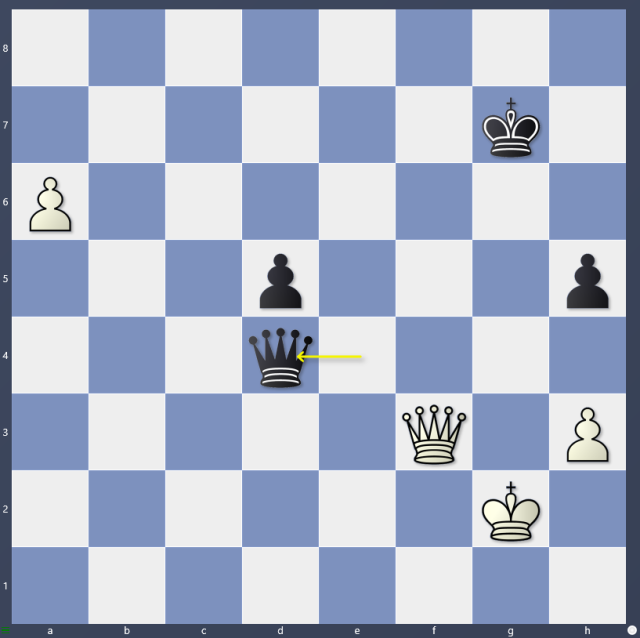
White had the terrific 46.Qf2!. After 46…Qa4 (46…Qe4+ 47.Kg1 Qb1+ 48.Kh2 and there are no more checks) 47.a7 h4 48.Qe3 (48.Qc5! Qe4+ 49.Kf2 was the most clinical line, because black doesn’t even have 49…d4 50.Qg5+ Kf7 51.Qh5+ and white exchanges Queens on e2, f3, or g4) 48…Kf6 49.Qc3?! (49.Qh6+ Kf7 50.Qh7+ Kf6 51.Qh8+ Kf7 is useless because 52.a8=Q?? Qc2+ with perpetual; but simply 49.Qc5 was easily winning, with the threat of 50.Qf8+, which will not exist in the game, with the black King on g6!) 49…Kg6 50.Qc5 Qe4+
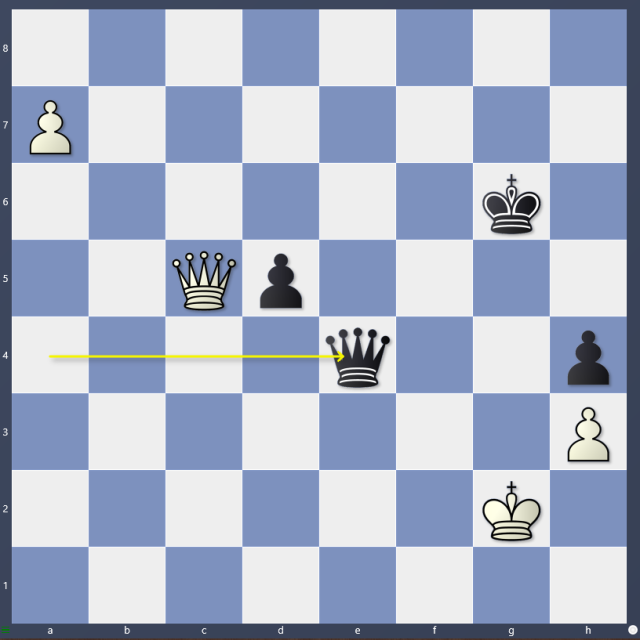
I was very happy here because I hadn’t seen that 51.Kf1! still wins for white. Neither did Fabi, but it’s true these endings are impossible to master at the board. After 51.Kf2? d4!, suddenly the position is drawn (remember there is no check on f8!), but Fabi found the strength to pose new problems.
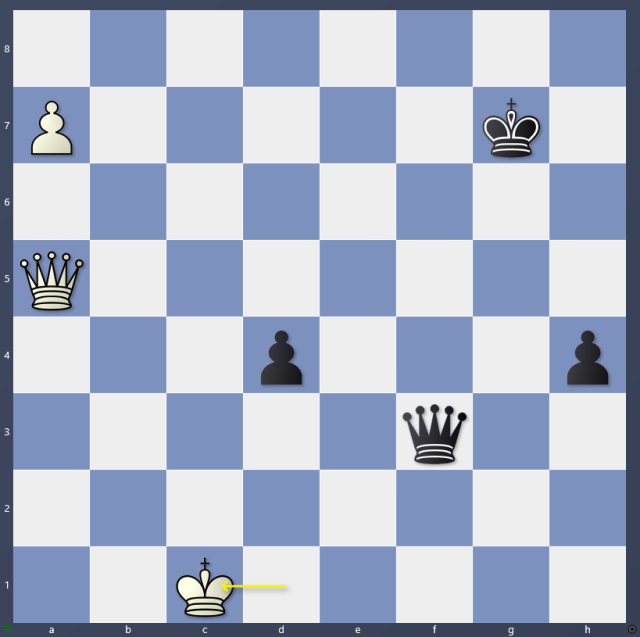
Again, there’s barely enough time to correctly handle that ending. I thought the checks would end and there would be no perpetual, which wasn’t entirely accurate. The following sequence shows how complex it is ; 61…Qe3+ 62.Kb2 Qe2+ 63.Kb3 Qd3+ 64.Kb4 Qd2+ 65.Kb5 Qe2+ 66.Kb6 Qe6+ 67.Kb7 Qe4+ 68.Ka6 and it’s true that there’s no more saving check (68…Qc6+ 69.Qb6 Qc4+ 70.Kb7 Qd5+ 71.Qc6 or 68…Qd3+ 69.Qb5 Qa3+ 70.Kb6). On the other hand, and it’s certainly quite incredible because the white King seems to be better placed on a6, 61…d3! saves the day by exploiting the free tempo offered. Having not seen this subtlety, I played 61…Qa8? on the general ground that when the white Queen lands on b8 it’s harder for the white King to escape perpetual. But that isn’t true with the pawn on d4! After 62.Qc7+ Kh6 63.Qb8 Qc6+ 64.Kb1 (64.Kb2? Qc3+ 65.Ka2 Qa5+ and this is a perpetual!) 64…Qe4+ 65.Kb2 Qe2+ 66.Ka3! (once again an only move to escape) 66…Qd3+
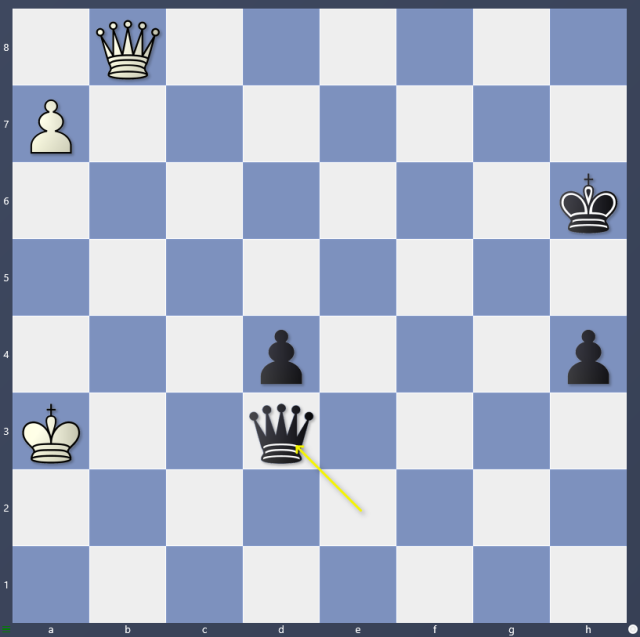
67.Kb4?
(a last-minute slip! 67.Qb3! would have won, because after 67…Qa6+ [67…Qe4 68.Qb6+ followed by 69.Qd8] 68.Qa4 Qd6+ 69.Kb2! (only move again) 69…Qh2+ 70.Qc2 Qh1 71.Qc1+)
67…Qc3+ 68.Kb5 Qb3+ 69.Kc5 Qc2+ 70.Kd5 Qg2+! (the only check that holds) and after a few other forced checks given on the right squares, Fabi had to take the pawn on d4 and allow an easier perpetual on a widely open board..

MVL – CARUANA, Final, Rapid 1
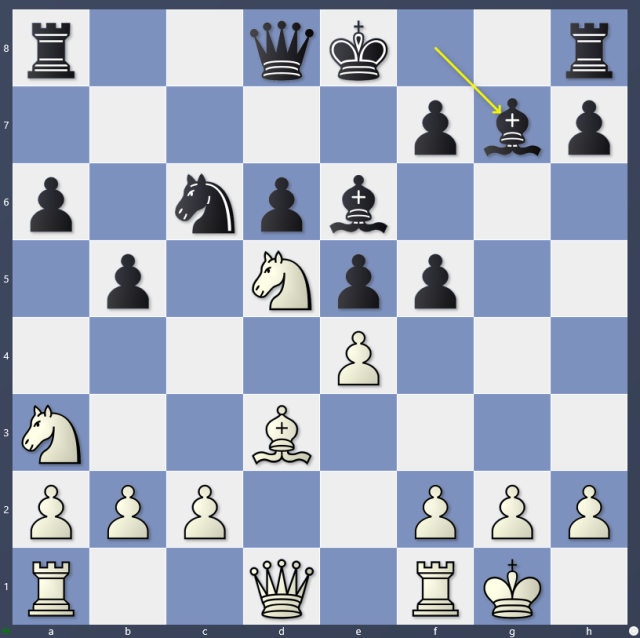
Here I quickly played 13.Qd2? thinking it was part of my prep! (in the first blitz I eventually chose the correct 13.Qh5). With so much to memorize it’s always difficult, and as soon as I played that move I thought: « that’s odd – it looks completely stupid ». And it was! Fortunately Fabi didn’t exploit it and allowed a tactical sequence forcing the draw:
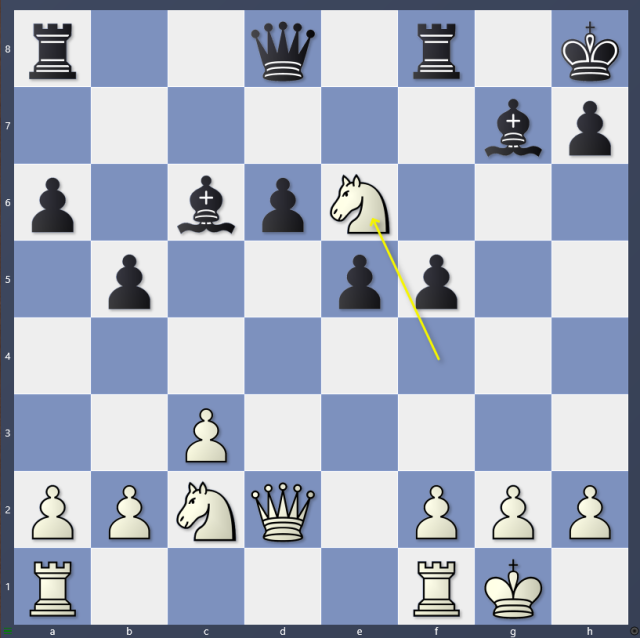
I was expecting the perpetual check after 19…Qh4 20.Nxf8 Bxg2 21.Kxg2 Qg4+. So I didn’t understand his 19…Qf6?, which seemed to show that he was playing for a win, but I still thought it was very, very daring!
But what Fabiano explained to me afterwards was that after 19…Qh4, he feared 20.f3 Rf6 21.Qxd6?. But I had seen the refutation that he had missed, 21…Qc4!. In the game, I found 20.Nxf8 Bh6 21.Ne3!, which is very effective because the Knight always lands on d5 to block the Bishop.
The technical conversion was complicated because not allowing any counterplay against a Bishop pair is never trivial.
CARUANA – MVL, Final, Blitz 4
Drama reached its peak in the final blitz, which I desperately needed to win to reach the tiebreak. I decided to play calmly in a symmetrical position while keeping pieces on the board. I think that’s a good strategy when you must win with black because it forces the white side to ruminate a bit. Fabi made several concessions in the early middlegame, other ones later, until the position became very hard to defend for him, and collapsed.
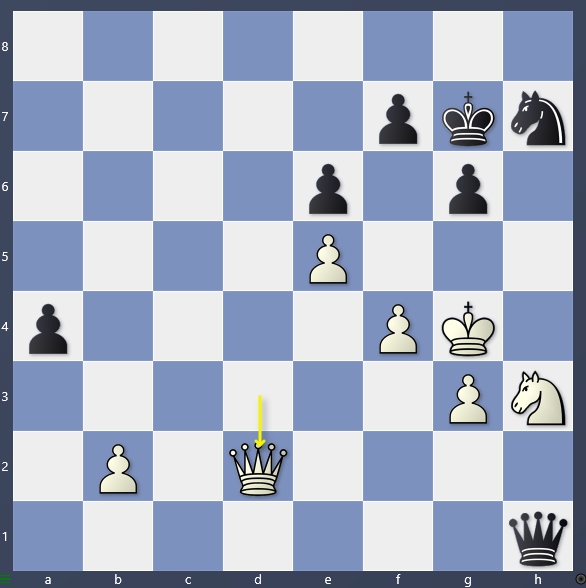
There were many mutual mistakes in the final moves, and at this stage we each had 17 seconds left (increment was 2″). With the white King in such a bad shape, 47…f5+! was the right move. After 48.Kh4 (48.exf6 Nxf6+ 49.Kh4 Qf3! is mate), I thought I could win with 48…Qf3??, forgetting the terrible 49.Qd7+ and if 49…Kh6 50.Qxh7+!. I played 49…Kf8 instead and it’s a perpetual after 50.Qd8+.
The win would have come from 48…g5+! 49.fxg5 Nf8!, threatening …Ng6+ and …Qf3 while controlling the check on d7…
Maxime’s games in the Grand Swiss:
Maxime’s games in the Grand Chess Tour final:
A few weeks ago Maxime took a two-day course at the GIGN headquarters, the French elite Gendarmerie unit specialized in crisis management and missions requiring highly specialized skills, including counter-terrorism, close protection and surveillance. Renowned worldwide, the unit is famous for its extremely demanding training and precise methods. At the invitation of Commander Ghislain Réty, Maxime was able to visit the facilities and receive expert advice on stress management, sleep, behavioral analysis, recovery and effort management.
He also accepted a few physical challenges, such as climbing a 24-meter tower ladder and then walking along a narrow metal beam – a real test of balance and nerve!


